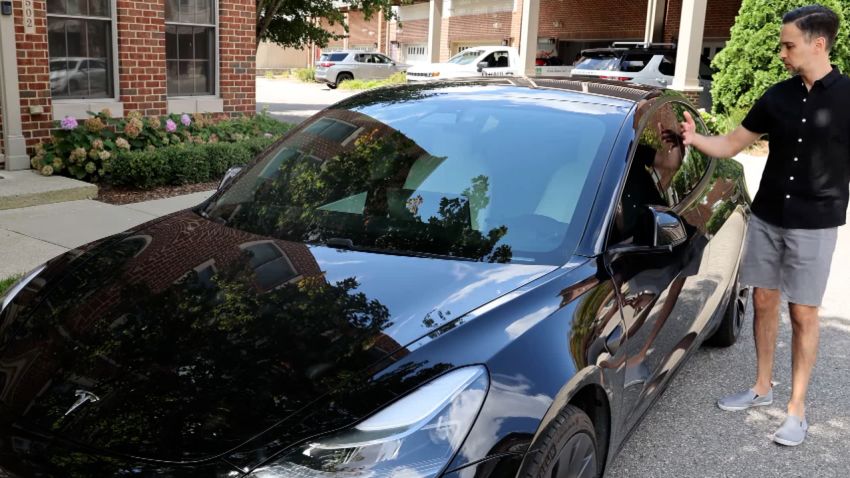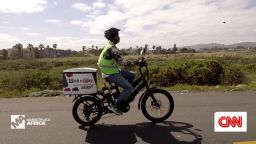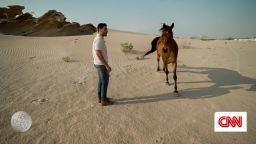Tesla’s price for the feature it calls “full self-driving” has increased again. This time to $15,000, making it an unusually expensive option for a car.
“After wide release of FSD Beta 10.69.2, price of FSD will rise to $15k in North America on September 5,” Musk tweeted last month.
The release of the new software version was delayed on Monday until “probably end of week. Needs a bit more polish,” Musk said, but the price increase took effect.
Some Tesla owners who paid far less for an earlier, unfinished version of the same “full self-driving” software that now retails for $15,000 caution that the new price does not make sense for most buyers.
CNN Business spoke with 13 people who have cars with the “full self-driving” beta and the overwhelming majority, 11 people, said they felt it wasn’t worth $15,000. These drivers say the software has improved, but not enough to warrant the price. They describe at times having to pay more attention while using “full self-driving” than when driving on their own, as the car can be unpredictable. More than 100,000 Tesla vehicles have been sold with the feature.
Tesla buyers can purchase “full self-driving” outright when they buy their car, or they may opt to pay a monthly subscription fee to use the feature. Many of the Tesla drivers who spoke with CNN Business suggested that, were they in the market today for a Tesla, they would opt for the monthly subscription fee for “full self-driving,” which still costs $199 a month or purchase for the more affordable Enhanced Autopilot, which combines features like automated parking and automated lane changes on highways, but isn’t so clearly an unfinished, imperfect product.
Three people told CNN Business that they feel that “full self-driving” is worth the high price to them because they personally relish testing new technologies and are excited about the promise of what “full self-driving” might eventually become.
“I really admire the optimism of all these people,” Brian Moody, executive editor of the online car marketplace AutoTrader.com, said of those who believe “full self-driving” may soon handle all driving responsibilities despite years of delays. “I wish I could be that way.”
Moody told CNN Business that “full self-driving” is especially expensive compared to other available driver-assist packages like GM’s SuperCruise and Nissan ProPilot Assist. SuperCruise generally costs about $2,500 – plus a monthly $25 connectivity fee after the third year – and ProPilot Assist can be under $2,000 in some cases.
The promised functionality of these driver-assist packages is more modest. While they steer and keep up with traffic on some highways, Musk says that “full self-driving” will someday allow Tesla owners to operate their vehicles as robotaxis that do not need a human behind the wheel.
It’s not unheard of for options to reach the $10,000 threshold, but such high-priced options typically include a range of add-ons like an adaptive suspension, engine upgrade and adaptive headlights, he said.
Moody said he expects consumers to pay for the monthly subscription of “full self-driving” rather than pay $15,000 for the promise of the feature’s future potential.
Taking the full plunge
Four years ago, Wisam Al-Rawi bought a Tesla equipped with the driver-assist software the company calls “full self-driving.” He says he was happy to pay a $2,500 premium for “full self-driving” in anticipation that his Tesla would one day drive itself. But last month Al-Rawi, frustrated by the software’s flaws, had enough. He asked Tesla to remove it.
Now the California resident is surprised to see that Tesla is raising the price of “full self-driving” to $15,000 even as it falls short of the automaker’s projections.
“I would never even pay $10,000 for it,” Al-Rawi told CNN Business. “They overpromised like crazy.”
But Tesla feels that the feature, which the company says remains in testing (or “beta”) despite its wide release, will be worth much more than even the price it’s selling for now.
“The FSD price will continue to rise as the software gets closer to full self-driving capability with regulatory approval,” Musk wrote on Twitter in 2020. “[At] that point, the value of FSD is probably somewhere in excess of $100,000.”
But “full self-driving” wasn’t close to what Al-Rawi heard from Musk, who has claimed every year from 2015 to 2022 that self-driving Teslas were probably a year or two away.
Al-Rawi said it was stressful to use the “full self-driving” beta because the software would sometimes try to hit curbs or drive on the wrong side of the road. His car would brake unexpectedly at times, triggering road rage from others.
“He promised your car can be a taxi. This is going to be generating income,” Al-Rawi said. “Unfortunately, none of this happened.”
Al-Rawi still believes that Tesla’s driver-assist features are better than any other automaker. He calls the automaker’s lane-keeping feature “fantastic.” The “full self-driving” feature, which navigates local roads with steering, braking and acceleration, is where Al-Rawi had problems.
Al-Rawi is far from the only one to be concerned about Teslas and unexpected braking. The National Highway Traffic Safety Administration, which regulates motor vehicles, launched an investigation in February following hundreds of complaints of unexpected braking.
But the limitations of “full self-driving” haven’t led many Tesla owners to regret their purchase.
“There’s nothing in FSD that’s actually that useful, certainly not for this kind of money,” Logan Rossignol, a Tesla “full self-driving” beta tester, told CNN Business. “You’re still paying for a promise. And what’s that’s worth to you is up to you.”
Rossignol feels the investment was worth it for him because he is a software developer and enjoys experimenting with technology. “Full self-driving” changes regularly due to over-the-air software updates. Drivers wake up some mornings with a new version of the technology to test and play with.
Sunny Gulati, who said he paid $8,000 for “full self-driving,” says he feels an “inherent joy” from watching his Tesla try to navigate roads. He said he no longer envies other cars on the road. The system doesn’t have to be perfect for him to love it.
He justified the purchase of “full self-driving” in part because he thought it could one day make having a second car unnecessary. Gulati said that he wouldn’t have been able to afford $15,000 for “full self-driving,” and would opt for the monthly subscription fee if purchasing today.
Staying mobile
Don Burke bought his Model S in 2019 because he wanted a vehicle that might one day drive itself.
The Virginia resident said he has a form of muscular dystrophy. His legs are weakening. He will be in a wheelchair in a few years.
Burke spoke with CNN Business during a multi-month road trip around the United States.
He’s driving as much as 600 miles a day and says that Tesla’s driver-assist technology makes him a much safer driver. He said he feels humans are terrible drivers, pointing to the many deaths on roads today, and believes machines will be better.
Burke said that if he was in the market again for a Tesla, the $15,000 price for “full self-driving” would be worth it to him.
“I love being able to be mobile,” Burke said. “I desperately want a machine that I can own that can drive me to where I need to be when I get in a wheelchair.”





